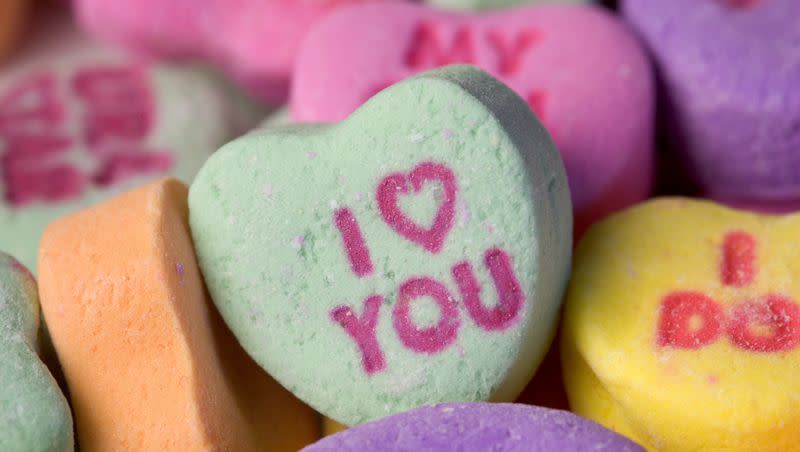The Valentine’s Sweethearts candies: How were they created?

With Valentine’s Day approaching comes various options to choose to buy for your partner: flowers, mixed chocolates and Val-o-gram messages, among several others.
However, there’s another holiday treat that’s been around for a very long time and still remains as well known to this day: Sweethearts candies.
The sweet heart-shaped candies — also called conversation hearts — have been synonymous with the holiday for over a century. And they still sell well on store shelves, as more than 8 billion Sweethearts candies are sold within the six-week period prior to Valentine’s Day, per Smithsonian Magazine.
Additionally, according to Smithsonian Magazine, Sweethearts fill up 40% of the Valentine candy market, just falling behind chocolate.
Related
How did Sweethearts get introduced?
The story starts back in 1847, when Oliver Chase invented a machine to produce lozenges — or sugar paste mixed with medicine — at an easier rate, per HuffPost. During this time, then-called apothecaries experienced high demand for lozenges, but they were difficult and time-consuming to produce.
So to simplify the process and increase production speed, Oliver created the medication-cutting machine that helped slice the product into rounded discs, as reported by McGill University. Eventually, he moved away from the medical field to make his own candy company, later known as NECCO.
Interestingly enough, his creation of sugar-flavoring discs are still in production today in the form of NECCO wafers.
In 1866, according to HuffPost, Oliver’s brother Daniel came up with an idea to put words on the discs, and he used a “felt roller pad moistened with vegetable coloring” to make the imprints.
Several theories have attempted to explain how this was devised, including one that Daniel was inspired by a combination of love letters sent to Civil War soldiers and NECCO wafers carried around by them, but none have been confirmed, as mentioned by Mental Floss.
Per Today, the candies became a hit for the company, especially with their wedding-day versions expressing statements like, “Married in white, You have chosen right.”
By the early 1900s, heart-shaped versions were molded with shorter messages, and these grew to a household phenomenon through messages such as “Be Mine” and “Kiss Me” — both of which are still used to this day, as stated by Smithsonian Magazine.
Over time, the sweet heart-shaped candies became closely associated as a symbol for Valentine’s Day, and it took nearly a century before new statements were added to them in the early 1990s, as shared on Spangler Candy’s company website. The company acquired the product in 2018 and currently owns it.
How are they now made?
The Atlantic spoke with Hugh B. Albert, production manager at NECCO, about how Sweetheart candies are made to this day, which involves 10 steps:
1. Get the ingredients.
Gather sugar, cornstarch, corn syrup and the appropriate amount of flavors and colors together.
2. Mix the ingredients together.
3. Chunk the mixture.
An employee chunks it into 50-pound blocks and places it into a stainless steel hopper.
4. Flatten the mixture.
5. Gather the messages and print them on the mixture.
Employees paint cloth with red food dye and place the cloths on metal print plates with the sayings.
6. Cut the hearts out.
7. Dry the hearts out.
8. Mix and sack the hearts.
Since the company produces 7 million pounds of candies a year, hearts are prepared, made and stored in warehouses year round.
9. Pack the hearts.
10. Enjoy.
Albert claimed that the equipment, process and even recipe to make Sweethearts candies has changed very little over multiple decades.
Related

